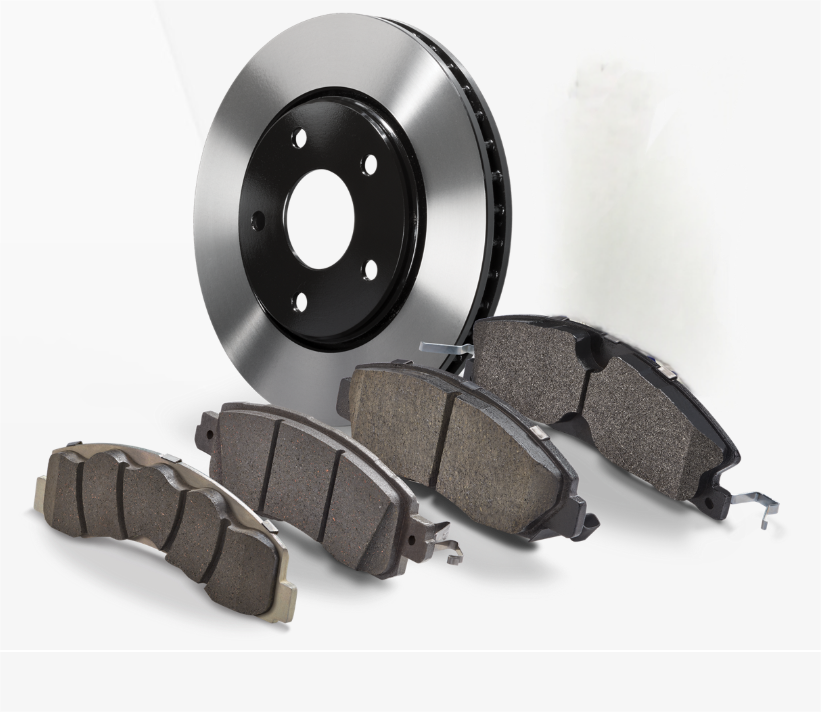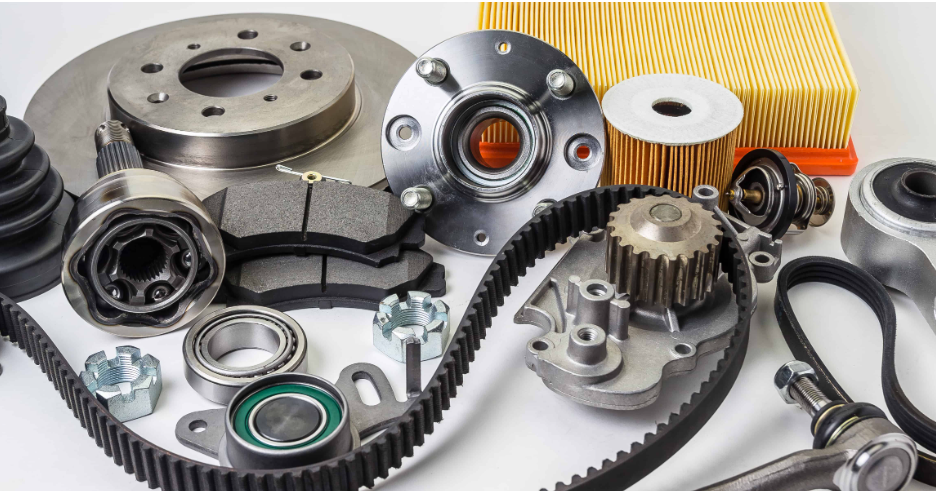Material Composition and Durability of Quality Brake Discs
Traditional vs. Advanced Brake Disc Materials
Traditional brake discs are typically made from cast iron, valued for its durability and superior heat dissipation characteristics. Cast iron's robustness makes it a common choice for everyday vehicles. However, the weight of iron can be a drawback, affecting vehicle efficiency. As technology progresses, advanced materials like carbon-ceramic are increasingly being used. These materials offer numerous advantages, including a significant reduction in weight and enhanced heat resistance, which are especially beneficial under extreme driving conditions. Carbon-ceramic discs, in particular, perform well in high-performance vehicles due to their ability to withstand higher temperatures without compromising braking efficiency.
Studies comparing traditional and advanced brake disc materials show noticeable differences in lifecycle and durability. For instance, carbon-ceramic discs have been found to last significantly longer than their cast iron counterparts, despite the initial higher cost. This longevity, coupled with superior performance attributes, often makes advanced materials a cost-effective solution over the disc's lifecycle. In conclusion, while traditional brake discs have their strengths, advanced materials provide substantial benefits in specific contexts where performance is crucial.
How Material Quality Affects Braking Performance and Safety
The quality of the materials used in brake discs profoundly impacts braking performance and safety. High-quality materials ensure effective stopping power, reducing stopping distances and improving response times, which are critical for driver and passenger safety. Substandard materials, conversely, can lead to braking failures, increasing the risk of accidents. For example, studies have documented cases where low-quality brake discs have cracked or warped under heat stress, leading to severe safety concerns.
Using certified, high-quality brake disc products is essential to ensuring safety and performance. Consumers and businesses alike are advised to source brake replacement parts from reputable suppliers known for their commitment to quality and certification standards. This not only guarantees product reliability but also aligns with best practices for vehicle maintenance and road safety. Therefore, investing in quality brake discs is not just about performance; it's an imperative for ensuring overall vehicle safety and operational integrity.
Heat Dissipation Mechanisms in High-Quality Brake Discs
The Science of Heat Management in Braking Systems
Heat generation is a critical aspect of braking systems, significantly influencing both performance and longevity. When a vehicle slows down, the kinetic energy transforms into heat through friction, primarily between the brake pads and discs. This heat can affect braking efficiency, potentially leading to brake fade—a temporary loss of braking power as temperatures climb. Hence, effective heat management strategies, such as optimizing thermal conductivity, are essential when choosing materials for brake discs. According to experts, selecting materials with high thermal conductivity, such as cast iron or carbon composites, can drastically reduce the chances of brake fade. Research studies suggest that advanced materials can enhance heat management, offering better performance in demanding conditions.
Ventilation and Design Features for Effective Cooling
Ventilation and design features play a vital role in the cooling of brake discs. Designs featuring drilled or slotted discs are common, as they enhance airflow around the braking surface, effectively dissipating heat. These features facilitate outgassing of the brake pads, maintaining optimal performance during intense driving scenarios. Recent trends in brake disc designs incorporate technologies such as vane systems to further improve air circulation. Case studies from high-performance vehicles highlight the effectiveness of such innovations, demonstrating substantial reductions in heat buildup and improved braking efficiency. These examples underscore the importance of adopting innovative designs to ensure safe and consistent stopping power.
The Role of Friction in Braking Efficiency and Safety
Understanding Friction Coefficients in Brake Discs
Friction coefficients play a crucial role in determining the efficiency of brake discs by affecting how effectively a vehicle can decelerate. Essentially, friction coefficients measure the frictional force generated between brake pads and discs, and they are key indicators of braking performance. For instance, materials with higher friction coefficients offer better stopping capabilities, while lower coefficients might require longer stopping distances. This is evidenced by research from the National Highway Traffic Safety Administration which links optimal friction coefficients to improved vehicle safety metrics. By understanding these coefficients, we can choose materials that enhance both efficiency and safety in braking systems.
How High-Friction Materials Improve Stopping Power
High-friction materials in brake discs are instrumental in improving stopping power across various driving conditions. These materials, such as carbon-ceramic composites, enable shorter stopping distances due to their superior friction properties compared to standard materials like cast iron. However, these high-friction solutions often come with trade-offs, such as increased wear rates and more demanding heat management challenges. Despite these concerns, numerous experts highlight the benefits of high-friction materials in terms of performance gains, evidenced by studies comparing their effectiveness to traditional options. Ultimately, the choice of material should balance the need for enhanced stopping power with the requirements for durability and optimal heat dissipation.
Design Innovations for Enhanced Brake Disc Performance
Slotted, Drilled, and Coated Discs: Balancing Performance and Longevity
Slotted and drilled brake discs are essential for dissipating heat and preventing moisture buildup. These designs feature channels or holes in the disc surface, which allow gases and moisture to escape, enhancing braking performance, particularly under intense conditions. For instance, slotted discs channel away heat and gases that build up between the pad and disc, increasing friction and efficiency. Coated discs, on the other hand, offer durability by reducing corrosion and wear. The coatings shield the disc from environmental factors, extending the lifespan of the discs significantly. Various industry standards validate the effectiveness of these features; the enhancements in brake performance metrics highlight the increased longevity when these designs are used.
Structural Integrity and Weight Distribution in Modern Designs
Structural integrity is crucial in brake disc designs to withstand the high stress during braking. Modern brake discs are engineered to maintain their shape and functionality under extreme conditions without warping or failure. This is crucial for driver safety and vehicle performance. Similarly, weight distribution is an important consideration. A well-balanced brake disc improves vehicle handling and enhances overall driving dynamics by reducing vibrations during operation. Utilizing engineering insights, it's clear that designs balancing weight distribution and integrity outperform others, offering better stopping power and longevity. Advanced materials and innovative engineering techniques are driving these improvements, making modern brake disc designs more effective and reliable.
Maintenance Practices to Ensure Brake Disc Safety
Identifying Wear: Signs Your Brake Discs Need Replacement
Recognizing the signs of wear on brake discs is crucial for vehicle safety. Common symptoms include vibrations during braking, unusual noises, and visible surface degradation such as scoring or discoloration. Regularly inspecting your brake discs can help prevent potential failures and ensure continuous safety. This is vital as statistical data indicates a high percentage of brake failures stem from neglected maintenance. Routine inspections can detect early signs of wear, allowing timely replacement of brake disc replacement parts, and avoiding critical failures that could compromise safety.
Best Practices for Extending Brake Disc Lifespan
Adopting best practices for brake disc maintenance can significantly extend their lifespan and improve performance. Routine tasks such as cleaning, checking brake fluid levels, and avoiding aggressive driving habits can make a substantial difference. A checklist for vehicle owners should include these practices, ensuring that the brake discs remain in optimal condition. Experts recommend regular cleaning and inspections to remove dirt and debris, which can promote longevity. By following these maintenance practices and taking proactive care measures, vehicle owners can effectively prolong the life of their brake discs while ensuring top-notch performance.







